Your cart is currently empty!
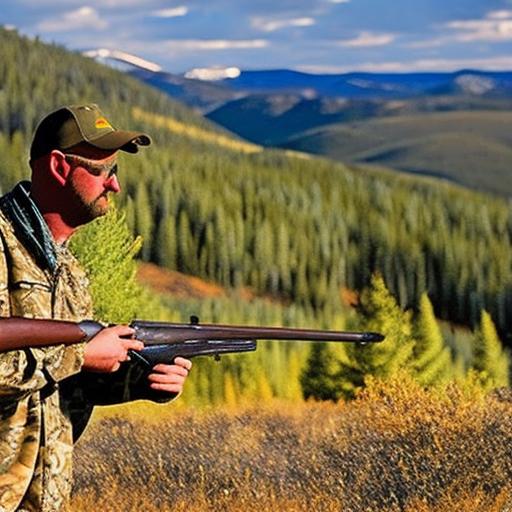
The Ultimate Guide to Rifle Elk Hunting: Tips and Techniques for a Successful Hunt

Elk hunting is a popular and challenging outdoor activity that attracts hunters from all over the world. Known for their size, strength, and elusive nature, elk provide a thrilling hunting experience for those who are up to the challenge. However, in order to have a successful hunt, it is crucial to understand elk behavior and habitat. By studying their patterns and preferences, hunters can increase their chances of locating and harvesting an elk.
Key Takeaways
- Understanding elk behavior and habitat is crucial for a successful hunt.
- Choosing the right rifle and ammunition is important for a clean and ethical kill.
- Essential gear for rifle elk hunting includes proper clothing, optics, and a reliable backpack.
- Physical conditioning and mental readiness are key to a successful hunt.
- Scouting for elk involves looking for signs of their presence and understanding their movements.
Understanding Elk Behavior and Habitat: Key Elements for a Successful Hunt
Elk behavior patterns play a significant role in determining where and when they can be found. During the summer months, elk tend to stay at higher elevations where they can find cooler temperatures and abundant food sources. As the weather cools down in the fall, elk begin their annual migration to lower elevations in search of mating opportunities. Understanding these seasonal movements can help hunters narrow down their search areas.
In terms of habitat preferences, elk are typically found in areas with a mix of open meadows, dense forests, and water sources. They prefer areas with ample vegetation for grazing and cover for protection. Additionally, elk are social animals and are often found in herds. By scouting areas that meet these criteria, hunters can increase their chances of encountering elk.
Scouting is an essential part of elk hunting. By spending time in the field before the hunting season begins, hunters can familiarize themselves with the terrain and identify potential hunting spots. Look for signs of elk activity such as tracks, droppings, rubs on trees, and wallows. Pay attention to areas with fresh sign as this indicates recent elk activity. It is also helpful to use trail cameras or binoculars to observe elk from a distance without disturbing them.
The Best Rifles and Ammunition for Elk Hunting: Choosing the Right Equipment
Choosing the right rifle and ammunition is crucial for a successful elk hunt. When it comes to rifles, it is recommended to use a caliber that is capable of delivering enough energy to take down an elk. Popular calibers for elk hunting include .270 Winchester, .30-06 Springfield, and .300 Winchester Magnum. These calibers offer a good balance of power and recoil.
In terms of ammunition, it is important to select bullets that are designed for hunting big game. Look for bullets that have a high weight retention and good penetration. This will ensure that the bullet can effectively penetrate the thick hide and muscle of an elk. It is also important to practice shooting with the chosen ammunition to become familiar with its performance.
Selecting the right scope is also important for accurate shooting. Look for a scope with a magnification range suitable for the distances you will be shooting. A variable magnification scope is often preferred as it allows for flexibility in different hunting situations. Additionally, consider the size and weight of the scope as it can affect the overall balance of the rifle.
Essential Gear for Rifle Elk Hunting: What You Need to Pack
| Item | Description |
|---|---|
| Rifle | A high-powered rifle with a scope is essential for elk hunting. |
| Ammunition | Bring enough ammunition for your rifle, plus extra in case of emergency. |
| Binoculars | Good quality binoculars will help you spot elk from a distance. |
| Clothing | Dress in layers and wear clothing that will keep you warm and dry. |
| Boots | Sturdy, waterproof boots with good traction are a must for hiking in rugged terrain. |
| Backpack | A backpack with enough room to carry your gear and supplies is essential. |
| GPS | A GPS device will help you navigate and keep track of your location. |
| Headlamp | A headlamp will help you navigate in the dark and keep your hands free. |
| First Aid Kit | Always carry a first aid kit with you in case of injury or emergency. |
When heading out for a rifle elk hunt, it is important to pack the right gear to ensure comfort and success in the field. Clothing and footwear should be chosen based on the expected weather conditions and terrain. Layering is key to staying warm and dry, as it allows for easy adjustment as temperatures fluctuate throughout the day. Opt for moisture-wicking base layers, insulating mid-layers, and waterproof outer layers.
Camping gear is essential if planning to spend multiple days in the field. A sturdy tent, sleeping bag, and sleeping pad are necessary for a comfortable night’s rest. Additionally, pack cooking equipment, food, water filtration systems, and other camping essentials.
Hunting accessories such as binoculars, range finders, and a spotting scope are crucial for locating and observing elk from a distance. A quality backpack is also necessary for carrying gear, water, and any harvested game. Other essential items include a knife for field dressing, game bags for meat storage, and a headlamp for navigating in low-light conditions.
Preparing for the Hunt: Physical Conditioning and Mental Readiness
Elk hunting can be physically demanding, requiring hunters to hike long distances and navigate challenging terrain. Therefore, it is important to be physically fit and prepared for the physical demands of the hunt. Engaging in regular cardiovascular exercise, strength training, and hiking can help improve endurance and stamina. Additionally, practicing shooting in various positions can help build strength and stability.
Mental preparation is also crucial for a successful hunt. Elk hunting often requires patience, persistence, and the ability to adapt to changing conditions. Visualize different hunting scenarios and mentally rehearse shot placement to build confidence. It is also important to have realistic expectations and understand that success is not guaranteed.
Pre-hunt practice shooting is essential for ensuring accuracy and familiarity with the rifle. Spend time at the range practicing shooting from different positions and distances. This will help build muscle memory and improve shooting skills. Additionally, practice shooting in various weather conditions to simulate real hunting situations.
Scouting for Elk: How to Find the Best Hunting Spots
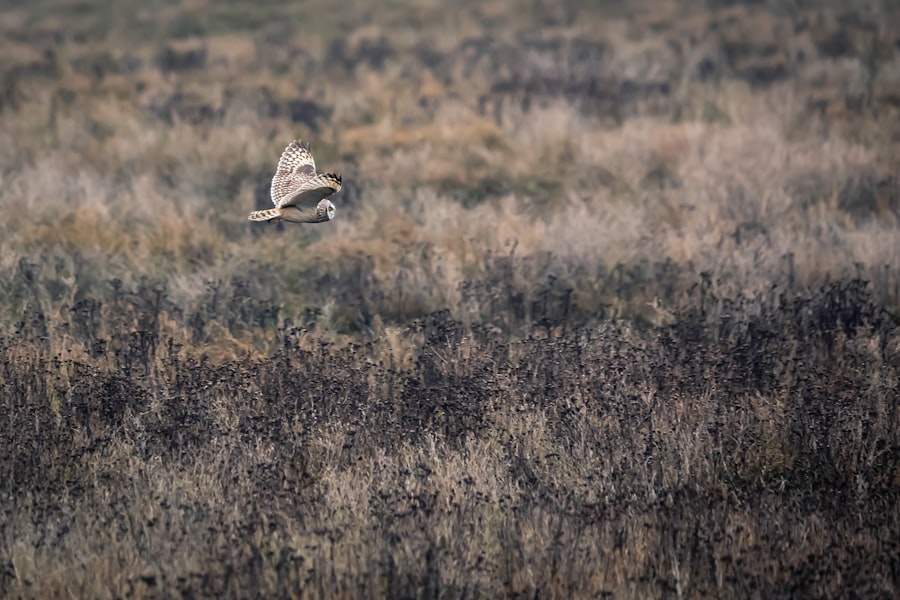
Scouting is a critical part of elk hunting as it allows hunters to gather information about elk movement patterns and identify potential hunting spots. Understanding elk movement patterns can help hunters predict where they are likely to be at different times of the day or season.
Look for areas with fresh elk sign such as tracks, droppings, rubs on trees, and wallows. These signs indicate recent elk activity and can help narrow down potential hunting spots. Pay attention to areas with abundant food sources such as meadows or areas with fresh vegetation.
Technology can also be a valuable tool for scouting elk. Use online mapping tools or GPS devices to identify potential hunting areas based on topography, vegetation, and water sources. Additionally, trail cameras can be placed in strategic locations to capture images of elk and gather valuable information about their behavior.
Tracking and Stalking Elk: Techniques for a Stealthy Approach
Tracking and stalking elk requires a stealthy approach to avoid detection. Elk have keen senses of smell, hearing, and sight, making it important to minimize noise, scent, and movement.
When tracking elk, move slowly and quietly. Pay attention to the wind direction to ensure that your scent is not carried towards the elk. Use natural cover such as trees or rocks to hide your movement. Avoid stepping on twigs or dry leaves that can create noise.
Stalking techniques involve getting close to elk without being detected. Move slowly and deliberately, taking advantage of natural cover to hide your movement. Use binoculars or a spotting scope to observe elk from a distance and plan your approach. Take advantage of terrain features such as hills or valleys to stay out of sight.
Shooting Techniques for Elk Hunting: Tips for Accurate Shots
Accurate shooting is crucial for a successful elk hunt. Proper shooting technique and shot placement are key factors in ensuring a clean and ethical kill.
Maintain a proper shooting stance by standing with your feet shoulder-width apart and slightly staggered. This provides stability and helps absorb recoil. Keep your body relaxed and avoid tensing up.
When shooting at long distances, it is important to account for bullet drop and wind drift. Practice shooting at different distances to become familiar with how your rifle performs at various ranges. Additionally, consider using a rangefinder to accurately measure the distance to the target.
Shot placement is critical for a clean kill. Aim for the vitals, which include the heart and lungs. This area is located behind the front shoulder and provides the best chance of quickly incapacitating the elk.
Field Dressing and Processing Elk: How to Handle Your Harvest
Field dressing and processing elk properly is essential for preserving the quality of the meat. Field dressing should be done as soon as possible after harvesting an elk to prevent spoilage and ensure food safety.
To field dress an elk, start by making a shallow cut from the base of the sternum to the anus. Be careful not to puncture the intestines or bladder. Next, make a circular cut around the anus and carefully remove the internal organs. Finally, remove the diaphragm and windpipe to allow for better cooling.
Processing tips include keeping the meat clean and cool. Remove any excess hair, dirt, or blood from the meat. It is also important to cool the meat as quickly as possible to prevent spoilage. Hang the meat in a cool, well-ventilated area or pack it in ice if available.
Proper storage and transportation are also important considerations. If hunting in remote areas, it may be necessary to quarter the elk and pack out the meat. Use game bags to protect the meat from dirt and insects. If transporting the meat in a vehicle, ensure that it is properly cooled and protected from contamination.
Hunting Ethics and Safety: Respecting Wildlife and Staying Safe in the Field
Hunting ethics and safety should always be a top priority for hunters. Respecting wildlife and practicing ethical hunting ensures that hunting remains a sustainable and responsible activity.
Ethical hunting practices include following all hunting regulations and laws, respecting private property rights, and only taking shots that are within your skill level and range. It is important to hunt for sustenance rather than for sport or trophy purposes.
Safety in the field is crucial to prevent accidents and injuries. Always treat firearms as if they are loaded and keep them pointed in a safe direction. Be aware of your surroundings and never shoot unless you have a clear view of your target and what is beyond it. Additionally, wear blaze orange clothing to increase visibility to other hunters.
Leave No Trace principles should also be followed to minimize the impact on the environment. Pack out all trash and leave the hunting area as you found it. Respect wildlife and their habitats by observing from a distance and avoiding unnecessary disturbance.
Tips for a Successful Elk Hunting Trip: Planning and Execution Strategies
Planning and executing a successful elk hunting trip requires careful preparation and attention to detail. Start by researching the hunting regulations and seasons in your desired hunting area. Obtain any necessary licenses or permits well in advance.
When planning your trip, consider factors such as weather conditions, hunting pressure, and accessibility of the area. It may be helpful to consult with local wildlife agencies or experienced hunters for advice on the best times and locations to hunt.
During the hunt, be patient and persistent. Elk hunting can be challenging, and success may not come easily. Stay focused and maintain a positive attitude even if you encounter setbacks or difficulties.
After the hunt, take the time to properly care for your harvested game. Process the meat promptly and store it in a cool place to ensure its quality. Reflect on your hunting experience and use it as an opportunity to learn and improve for future hunts.
Elk hunting is a thrilling and rewarding outdoor activity that requires knowledge, skill, and preparation. Understanding elk behavior and habitat is crucial for locating and harvesting an elk successfully. Choosing the right equipment, packing essential gear, and preparing physically and mentally are all important aspects of a successful hunt. By following ethical hunting practices, practicing safety in the field, and respecting wildlife and their habitats, hunters can ensure that elk hunting remains a sustainable and responsible activity. So, grab your gear, study up on elk behavior, and embark on an unforgettable elk hunting adventure.
If you’re interested in rifle elk hunting, you might also enjoy reading our article on “How to Hunt Pheasant” for some valuable tips and techniques. Pheasant hunting can be an exciting and challenging experience, and this article provides insights on everything from scouting for pheasant habitats to selecting the right gear. Check it out here!
FAQs
What is rifle elk hunting?
Rifle elk hunting is a type of hunting where hunters use rifles to hunt elk during the designated hunting season.
When is the rifle elk hunting season?
The rifle elk hunting season varies depending on the state and region. It typically takes place in the fall, usually between September and November.
What kind of rifle is best for elk hunting?
The best rifle for elk hunting is one that is powerful enough to take down an elk with one shot. A .30-06 or .300 Winchester Magnum are popular choices among hunters.
Do I need a license to go rifle elk hunting?
Yes, you need a hunting license and a tag to go rifle elk hunting. The requirements vary depending on the state and region.
What should I wear when rifle elk hunting?
Hunters should wear clothing that is appropriate for the weather conditions and terrain. This may include camouflage clothing, sturdy boots, and warm layers.
Is rifle elk hunting dangerous?
Rifle elk hunting can be dangerous if proper safety precautions are not taken. Hunters should always be aware of their surroundings and follow all hunting regulations and guidelines.
Can I hunt elk with a bow instead of a rifle?
Yes, elk can be hunted with a bow during the designated archery season. However, bow hunting requires a different set of skills and techniques than rifle hunting.

Herb has been a longtime lover of the outdoors. Whether it be hunting, camping, fishing or just getting outside to reset. Proud father and animal lover. Bourbon anyone?

by
Tags:
Comments

Categories
- Big Game Hunting (301)
- Deer (202)
- Reviews (3)
- Shooting (16)
- Slingshot (1)
- Small Game Hunting (42)
- Upland Hunting (126)
- Waterfowl Hunting (3)

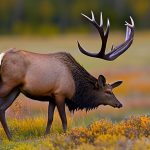
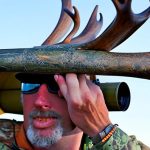
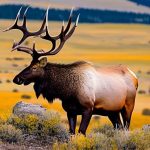

Leave a Reply